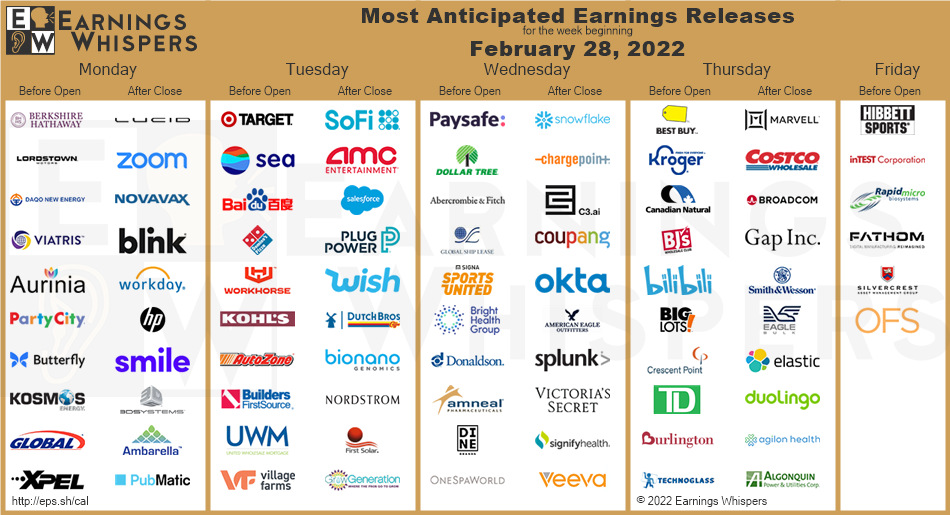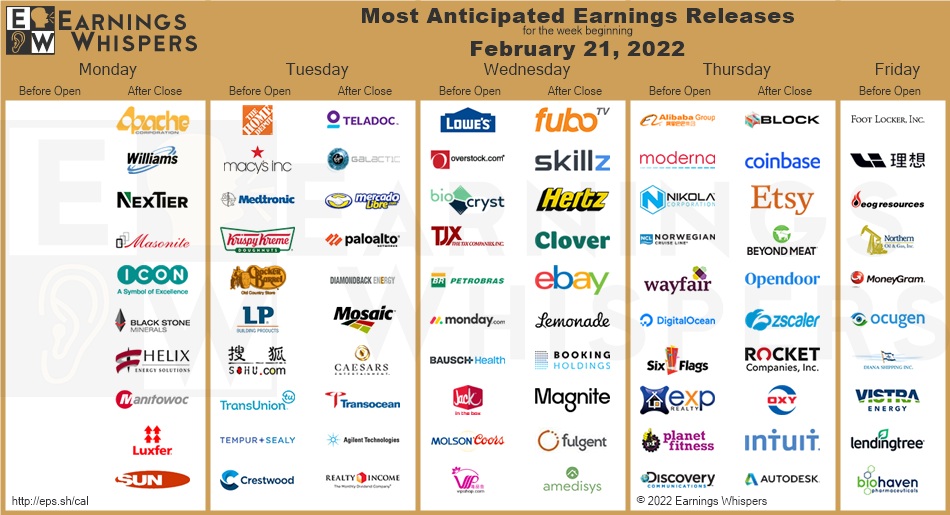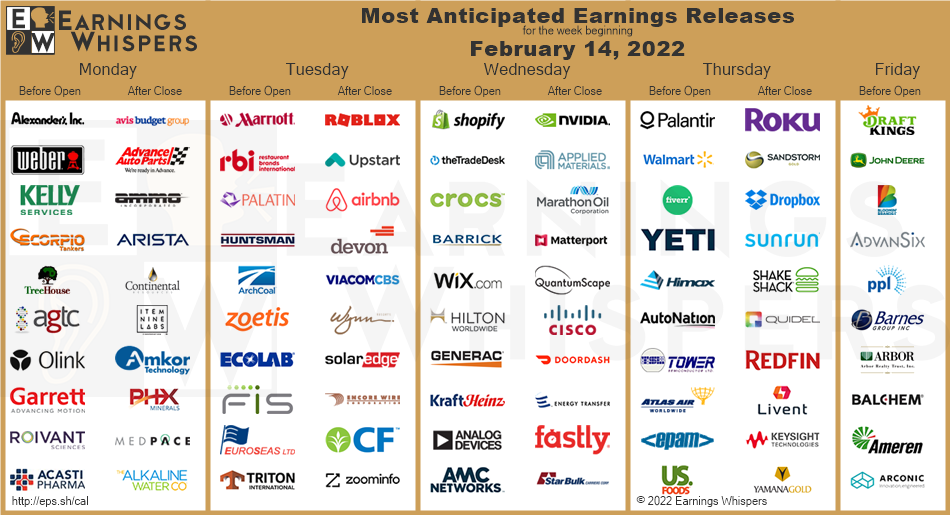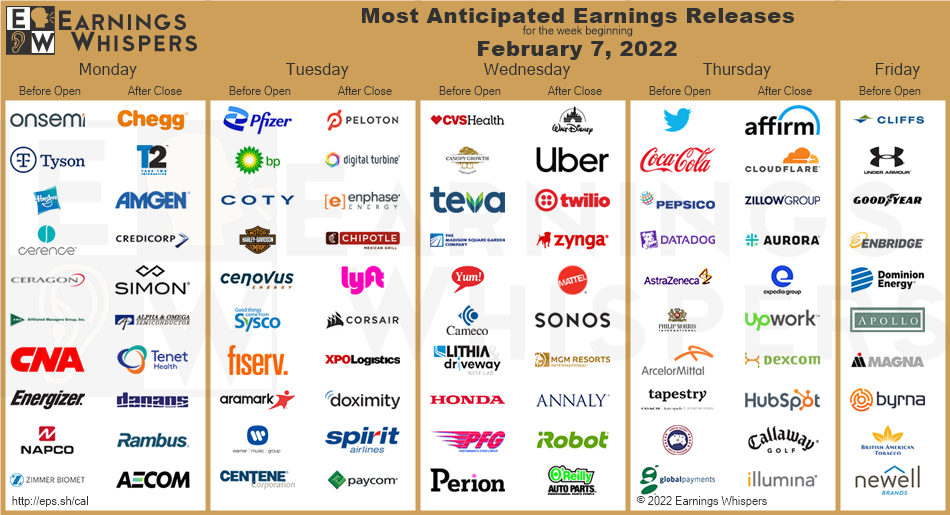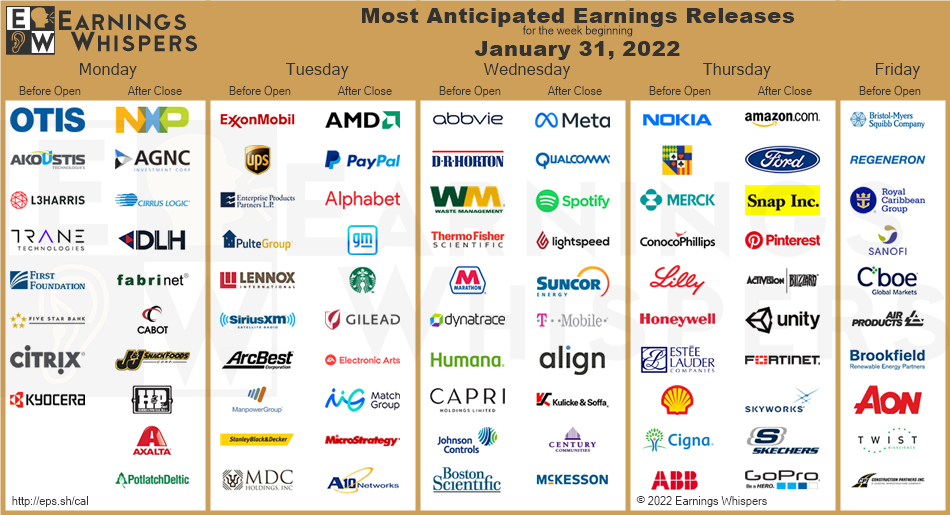Week of Feb 25, 2022 Weekly Recap & The Week Ahead
Monday, February 28th, 2022‘Don’t fight the tape, don’t fight the Fed’ — Martin Zweig
1. U.S. Adds Sanctions on Moscow After Concluding Russia Invaded Ukraine — U.S. President Joe Biden unveiled sanctions targeting Russia’s sale of sovereign debt abroad and the country’s elites, responding to what he described as the start of Vladimir Putin’s invasion of neighboring Ukraine. The sanctions come after Russia’s President Putin recognized two self-proclaimed separatist republics in eastern Ukraine as independent, a dramatic escalation in his standoff with Ukraine and its supporters in the West. Putin has denied Russia intends to invade Ukraine. the penalties targeted state-owned banks VEB.RF and Promsvyazbank, which the U.S. said hold more than $80 billion in assets and finance the Russian defense sector and economic development.
The U.S. measures will freeze the banks’ U.S. assets, ban Americans from doing business with them, cut them off from the global financial system and eliminate their access to the dollar. Meanwhile, The S&P 500 declined 44.11 points to 4304.76, leaving the index down more than 10% from its Jan. 3 high and marking its first correction since the onset of the Covid-19 pandemic in February 2020.
2. Ukraine Crisis Kicks Off New Superpower Struggle Among U.S., Russia and China — the challenges are different than those the U.S. and its network of alliances faced in the Cold War. Russia and China have built a thriving partnership based in part on a shared interest in diminishing U.S. power. Unlike the Sino-Soviet bloc of the 1950s, Russia is a critical gas supplier to Europe, while China isn’t an impoverished, war-ravaged partner but the world’s manufacturing powerhouse with an expanding military. This emerging order leaves the U.S. contending with two adversaries at once in geographically disparate parts of the world where America has close partners and deep economic and political interests. The Biden administration now faces big decisions on whether to regear its priorities, step up military spending, demand allies contribute more, station additional forces abroad and develop more diverse energy sources to reduce Europe’s dependence on Moscow.
3. Fast-Spreading Covid-19 Omicron Type Revives Questions About Opening Up — A more infectious type of the Omicron variant has surged to account for more than a third of global Covid-19 cases sequenced recently, adding to the debate about whether countries are ready for full reopening. Health authorities are examining whether the subvariant of Omicron, known as BA.2, could extend the length of Covid-19 waves that have peaked recently in Europe, Japan and some other places. Other countries have had more trouble shrugging off Omicron. In Denmark, where an estimated 92% of cases were BA.2 as of mid-February, a peak at the end of January was followed by another two weeks later.
Evidence so far suggests BA.2 is some 30% more infectious than its cousin, the BA.1 subvariant that kicked off the Omicron wave in southern Africa in November 2021. In South Africa, BA.2 has accounted for 82% of cases so far in February, according to health authorities in that country.
4. U.S. Sanctions Against VTB and Sberbank Aim to Disrupt Russia’s Economy — the U.S. on cut Russia’s two largest banks from direct access to the U.S. dollar, curtailing their activities and posing a threat to Russia’s exporting economy. State-controlled Sberbank and VTB together hold roughly half of all of the banking system’s assets, and are big lenders and service providers to companies in the country. One in every two companies in Russia has an account at Sberbank, the country’s largest bank says.
The moves, coordinated with allies in the U.K. and European Union in response to the invasion of Ukraine, however, fall short of a total shutdown. In effect, the actions will be more like sand in the gears of the Russian financial machine.
5. U.S. Consumer Spending Rose 2.1% in January and Inflation Accelerated Amid Omicron Wave — spending rose a seasonally adjusted 2.1% in January from the previous month, rebounding from a revised 0.8% decline in December, the Commerce Department reported Friday. Personal income was unchanged on the month, following the expiration of the federal government’s monthly child tax credit. The department’s measure of inflation—the personal-consumption-expenditures price index—rose to 6.1% in January from a year earlier, the fastest pace in four decades. After adjusting for inflation, consumer spending was up 1.5% in January while household income after taxes was down 0.5%.
6. Fed’s Preferred Inflation Measure Reaches Fastest Pace Since 1983 — the Commerce Department’s personal-consumption-expenditures index measure of core inflation, which excludes volatile food and energy costs, rose 5.2% in January from a year ago, up from 4.9% in December. That marks the sharpest 12-month increase since April 1983. On a monthly basis, the core PCE price index climbed a seasonally adjusted 0.5% in January from the prior month, the same pace as in the previous three months.
The Commerce Department’s measure of overall consumer inflation increased 6.1% from a year earlier, the fastest pace since 1982. The data reflect prices in January, before Ukraine-Russia tensions pushed oil prices to seven-year highs. The most-widely held futures for Brent crude, which call for delivery of oil in May, exceeded $100 a barrel on Thursday after Russia’s invasion of Ukraine threatened to scramble the region’s exports.
The week ahead — Economic data from Econoday.com:
